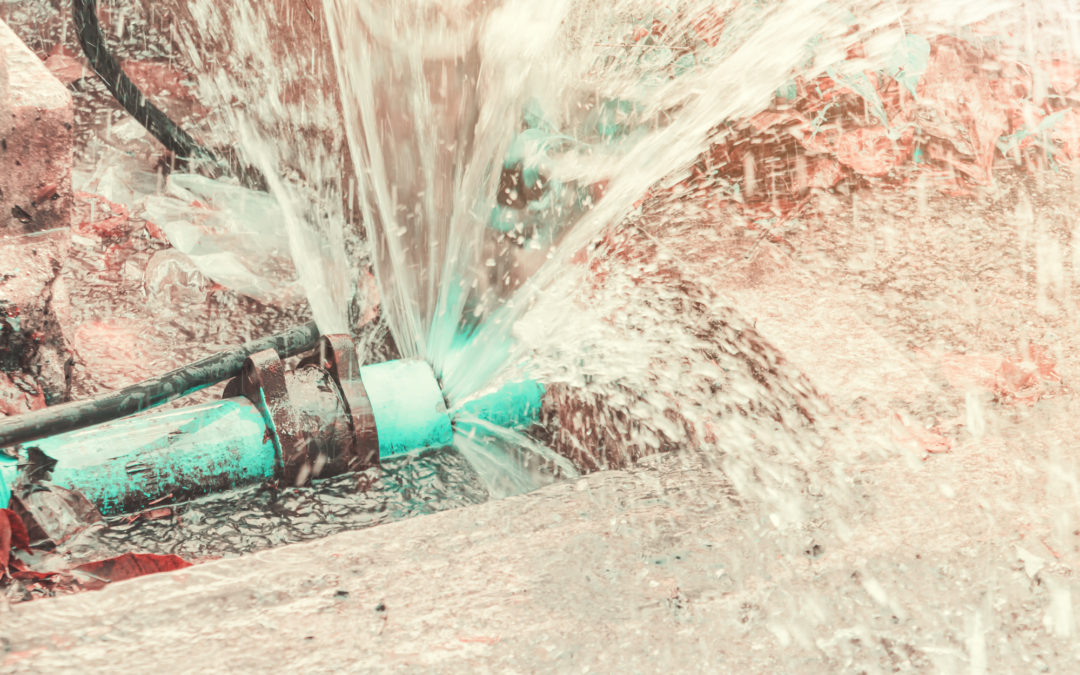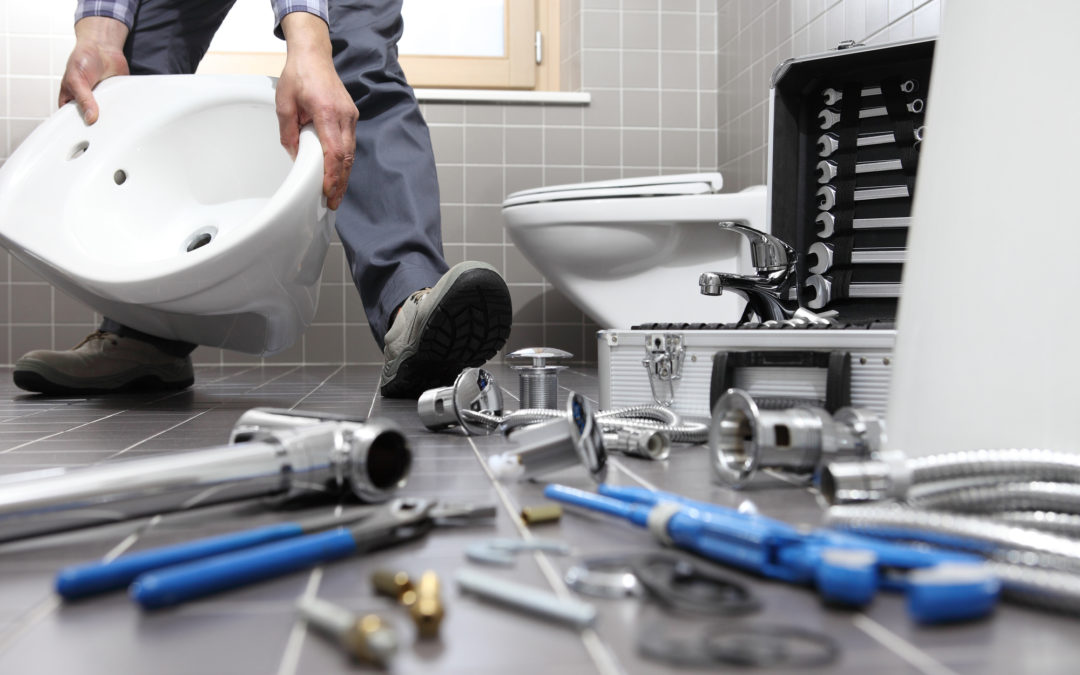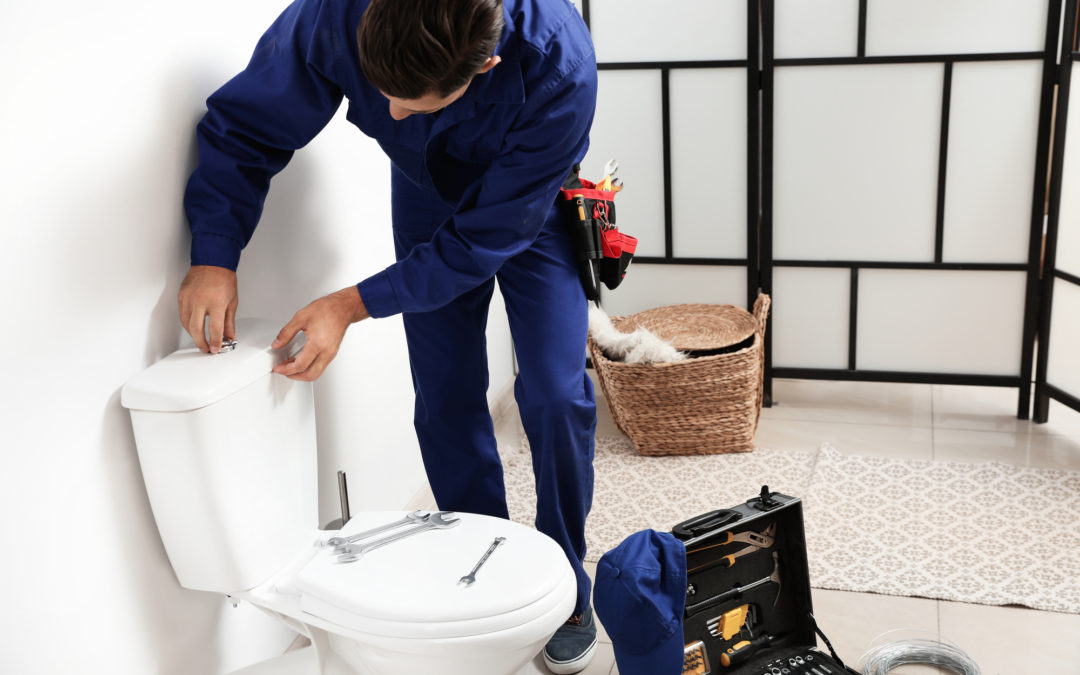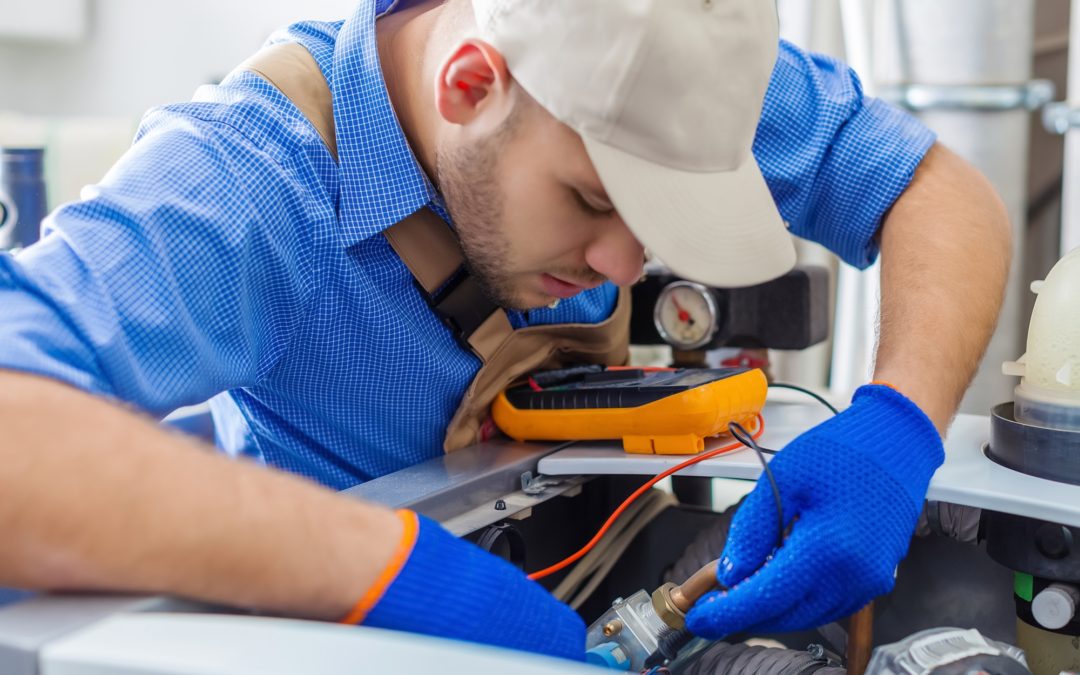
by Brandon | Jul 19, 2023 | News
In an exciting win for boathouse owners in Helford Passage, a Vaillant competition recently awarded them a brand new water heater to upgrade their current system. This prize is a testament to the importance of having a reliable and efficient water heater system for boathouse owners and their guests.
When it comes to water heaters, many people may not realize that they come in a variety of types and sizes, each with their own benefits and drawbacks. Boathouse owners, in particular, have some unique factors to consider when deciding on a water heater system.
Firstly, the size and layout of a boathouse can make it challenging to find a space to install a water heater system. This means that compact and space-saving options may be necessary. Secondly, a water heater system for a boathouse must be able to meet the needs of frequent guests without taking up too much energy or space, as boathouses are often used as vacation rentals.
One option for boathouse owners is a tankless water heater system, which is compact and can be installed in tight spaces. Additionally, tankless water heaters only heat water on demand, which can save energy and money over time. This also means that there is an endless supply of hot water, making them an ideal option for boathouses used as vacation rentals.
Another option is a hybrid water heater system, which combines a traditional tank system with a heat pump. This technology can be especially useful for boathouses in cooler climates, where heat pumps may not be as effective. Hybrid systems offer the energy efficiency of a heat pump with the reliable supply of hot water from a tank system.
Boathouse owners should also consider the type of fuel that will be used to power their water heater system. Natural gas is often the most cost-effective option, but propane and electric systems are also available. It’s important to identify the fuel source available in the area and factor in any additional installation costs or safety considerations.
Maintaining a water heater system is also crucial for boathouse owners. Regular inspections and routine maintenance can help identify any issues before they become major problems. This can save money on repairs and prevent any disruptions to guests’ stays.
As seen in the recent Vaillant competition, having a reliable and efficient water heater system is important for boathouse owners. By selecting a system that fits their unique needs and taking the necessary steps for maintenance, boathouse owners can ensure a comfortable stay for themselves and their guests. If you’re a boathouse owner in need of a new water heater system, contact an experienced plumber today to discuss your options and ensure you have a reliable and efficient system that meets your needs.

by Brandon | Jul 19, 2023 | News
As we enter the new year, the plumbing industry has begun to witness a shift towards sustainable solutions in order to reduce carbon emissions and protect the environment. One of the game-changing innovations leading the way is the H2Powerplant, presented by Wilo – a pioneering plumbing technology company. The H2Powerplant technology represents the future of sustainable plumbing, combining green energy and water supply technologies to meet the needs of urban populations while minimizing the impact on the environment. In this article, we will explore the Wilo H2Powerplant and its potential benefits towards sustainable plumbing technology.
What is the H2Powerplant?
The H2Powerplant is an innovative technology that focuses on harnessing renewable energy sources to provide sustainable water supply. The system works by converting electricity produced by solar or wind power into hydrogen, which is then stored in tanks and later used to power fuel cells. These fuel cells provide the power required to pump and treat water, making the process completely sustainable and environment-friendly. In addition, the H2Powerplant is equipped with an Internet of Things (IoT) platform that enables the remote monitoring and control of the system’s functions, making it an eco-friendly, convenient, and smart solution to the growing demands for water supply across the globe.
How does H2Powerplant work?
The H2Powerplant technology is made up of a series of components that work together to produce sustainable water supply. First, solar or wind power is harnessed and converted into electricity using photovoltaic cells or wind turbines. The electricity is then used to electrolyze water to produce hydrogen using an electrolyzer. The hydrogen is used to power fuel cells that provide electric power to pumps and other equipment that treat and distribute water. Any excess energy produced by the system can be stored in batteries or fed back into the grid.
What are the benefits of the H2Powerplant for sustainable plumbing?
The H2Powerplant offers numerous benefits towards the implementation of sustainable plumbing technology. Firstly, the system is 100% sustainable, as it relies on green energy sources to produce electricity and hydrogen. This reduces the carbon footprint of plumbing systems, thus minimizing the impact on the environment. Secondly, the H2Powerplant is a cost-effective plumbing solution in the long run as it reduces the dependence of dependence on fossil fuels and energy costs, which is especially beneficial in areas with high power costs.
Another key benefit of the H2Powerplant’s technology is its scalability, which makes it suitable even for large-scale plumbing projects. For instance, this innovative technology can be used effectively in large urban centers or even in disaster-struck areas where access to water and power can be challenging. Additionally, the technology can be integrated into existing plumbing infrastructure without the need for a complete overhaul. Furthermore, the H2Powerplant technology helps with achieving regulatory compliance on water usage, making it a sustainable, economical, and legally compliant solution for the plumbing industry.
Conclusion
The Wilo H2Powerplant represents a revolution in sustainable plumbing technology. This innovative system mitigates the environmental impact of plumbing systems, reduces the dependence on fossil fuels, generates cost savings, and is easily scalable for large-scale implementation. As the world becomes more aware of the need for reducing carbon emissions, the plumbing industry is beginning to adopt sustainable solutions such as the H2Powerplant. At Ace Plumbing Repair, we pride ourselves on implementing the latest technology to provide our clients with the best solutions possible. We highly recommend H2Powerplant technology to anyone seeking sustainable and cost-effective plumbing solutions. Visit aceplumbingrepair.com or call us at (844) 711-1590 to learn more about our services.

by Brandon | Jul 18, 2023 | News
A noisy toilet can disrupt your peace of mind, especially when it’s not in use. The constant sound of water running or hissing can be annoying and may even lead to higher water bills. If you’re wondering why your toilet makes noise when not in use, there are a few possible reasons. Here are some of the most common causes of a noisy toilet and what you can do to fix the problem.
Problem: A Faulty Fill Valve
One of the most common culprits for a noisy toilet is a faulty fill valve. The fill valve is responsible for refilling the tank with water after you flush. If it’s not working correctly, it may cause a hissing or running water sound. The sound can be even louder if the water level is low or there’s a lot of air in the pipes.
Solution: Replacing the Fill Valve
Replacing the fill valve is typically a relatively straightforward task, even for those without professional plumbing experience. You can find fill valves at most home improvement stores. Depending on the make and model of your toilet, you may be able to replace the fill valve yourself in a few simple steps.
Problem: A Leaky Flapper
Another common cause of a noisy toilet is a leaky flapper. A flapper is a rubber valve that opens and closes to allow water to flow from the tank into the bowl when you flush. If the flapper is leaking, it can cause the toilet to run continually, even when it’s not in use. As water continues to leak through the flapper, it may also cause the water level in the tank to drop, leading to additional noise.
Solution: Replacing the Flapper
Replacing the flapper is another relatively straightforward task that you can typically do on your own. You can find replacement flappers at most home improvement stores. Before you replace the flapper, make sure you turn off the water supply to your toilet. Then, remove the old flapper and replace it with a new one.
Problem: A Problem with the Ballcock
The ballcock is a device that controls the water level in the toilet tank. It works by regulating the water flow into the tank to ensure that it’s at the correct level. If the ballcock isn’t functioning correctly, it can cause the water level in the tank to be too high or too low, leading to noise and potential water waste.
Solution: Replacing the Ballcock
Replacing the ballcock is a bit more complicated than replacing the fill valve or flapper. Ballcocks can be found at most home improvement stores, but you may need to hire a professional plumber to install it for you.
Problem: High Water Pressure
If the water pressure in your home is too high, it can cause your toilet to be noisy. The high pressure can cause water to flow back into the tank or bowl, leading to hissing or running sounds.
Solution: Installing a Pressure-Reducing Valve
If your home has high water pressure, you may need to install a pressure-reducing valve. This device will work to reduce the water pressure throughout your home, which can help eliminate the noise in your toilet.
Conclusion
A noisy toilet can be a real annoyance, but it’s not necessarily a cause for alarm. By understanding the most common causes of toilet noise and how to fix them, you can restore peace and quiet to your bathroom. If you’re not comfortable making these repairs yourself, consider calling in a professional plumber to help you diagnose and solve the problem. Remember, a quiet toilet is a happy toilet! And don’t forget to visit aceplumbingrepair.com or call (844) 711-1590 for all your plumbing needs.

by Brandon | Jul 18, 2023 | News
As a homeowner, it can be quite frustrating and uncomfortable to notice an unpleasant odor coming from your toilet. Knowing the root cause of the smell and how to get rid of it can help you maintain a clean and odor-free bathroom. This article aims to demystify the reasons why your toilet stinks and what you can do to address the issue.
#1. Blocked Vent Pipes
Vent pipes are designed to regulate air pressure in your plumbing system and vent out gasses and odors from your bathroom. However, these pipes can become blocked by debris, such as leaves, bird nests, or small animals, which disrupts the proper airflow. When this occurs, it causes sewer gases to backflow into your house and create a foul smell.
To fix the problem, you may need the services of a professional plumber to inspect the vent pipes and clear any blockages. Additionally, you can prevent future blockages by installing a mesh or cap over the pipes to keep out debris.
#2. Damaged Wax Ring
A wax ring is a seal between your toilet bowl and the drainpipe, preventing water and waste from escaping into the bathroom. If the ring gets damaged, the resulting gap exposes the area between the toilet and the drainpipe, allowing sewer gas to escape into the bathroom, leading to a musty smell.
To fix the problem, you’ll need to replace the wax ring. This is a task that’s best handled by an experienced plumber, as you may need to remove and reinstall the toilet to access the wax ring.
#3. Clogged Toilet Trap
The toilet trap, also known as the S-shaped bend at the bottom of your toilet, plays a crucial role in preventing backflow of sewer gases. But, when this trap gets clogged by waste, it can cause the water to become stagnant, and a foul odor can emanate from your toilet bowl.
To address this problem, you can either use a plunger, a drain snake, or a liquid clog remover to clear the obstruction. Remember to use safety gloves when handling harsh chemicals to avoid skin burns.
#4. Improper Flushing Techniques
Another reason why your toilet may stink is flushing non-disposable materials down the toilet. For example, flushing sanitary pads, paper towels, or facial tissues down the toilet can block the drainage system or clog the toilet trap, leading to a foul odor.
To avoid this problem, it is essential to remind everyone in your household about proper flushing techniques. Only flush human waste and toilet paper down the toilet, and dispose of everything else in the garbage.
#5. Old Toilets
If you’re still using an outdated toilet, it could contribute to an unpleasant smell in your bathroom. Old toilets with weak flush power or a damaged trap can cause dirt and bacteria to accumulate, leading to a foul smell.
Consider upgrading to a modern design toilet that uses less water, is efficient, and has a powerful flush that clears the bowl with every flush. Not only will it improve the sanitation level in your bathroom, but it will also help save money on your water bill.
Final Thoughts
In conclusion, understanding the causes of toilet smells is vital to maintaining your home’s sanitation level. If you’re experiencing unpleasant smells from your toilet, it could be due to any of the above reasons. Remember, regular maintenance and inspection by a professional plumber can help you identify and fix any underlying issues that contribute to a smelly toilet.
Whether it’s a clogged toilet trap, damaged wax ring, blocked vent pipes, or improper flushing techniques, always seek the help of an experienced plumber to ensure your toilet smells fresh and clean all the time. Remember to include sophisticated Calls to Action to prompt the reader to check out Ace Plumbing Repair Services.

by Brandon | Jul 18, 2023 | News
There are few things more jarring than jumping into a shower, only to find that the water is suddenly scalding hot. While some may welcome the unexpected burst of heat, it’s usually a cause for concern. This sudden heat can be a sign of a problem with your water heater, and if left unchecked, it can lead to serious safety hazards. In this blog post, we’ll explore why your hot water might be suddenly too hot, and what you can do to fix the problem.
The Thermostat Is Set Too High
If your hot water is consistently too hot, the first thing you should check is your water heater’s thermostat. This thermostat is responsible for setting the temperature of your water heater, and if it’s set too high, it will cause your water to be too hot. Most water heaters have a thermostat that ranges from 90 to 150 degrees Fahrenheit. If your water heater is set to the maximum temperature, it will cause the hot water to be too hot. The ideal temperature for most households is around 120 degrees Fahrenheit, and anything higher than that could be dangerous.
To adjust your thermostat, you’ll need to locate it on your water heater. It’s usually a small knob or dial that’s located on the side of the unit. Turn the thermostat down until the water reaches your desired temperature, and you should notice a difference in the temperature of your hot water.
The Thermostat Is Malfunctioning
If your hot water is suddenly too hot, and you’ve checked your thermostat, it’s possible that the thermostat is malfunctioning. Over time, the thermostat can wear down and become less accurate, which can cause the water heater to overheat and produce hot water that’s too hot. In this case, you’ll need to have the thermostat replaced by a professional plumber.
Sediment Buildup
If your water heater is old, it’s possible that sediment buildup is causing your hot water to be too hot. Over time, minerals and sediment in the water can settle at the bottom of the tank, which can cause the water heater to overheat. If this is the case, you’ll need to have your water heater flushed by a professional plumber.
Faulty Pressure Relief Valve
The pressure relief valve is an important safety feature of your water heater. It’s responsible for releasing pressure that builds up in the tank, which prevents the tank from exploding. If the pressure relief valve is faulty, it can cause the water heater to overheat and produce hot water that’s too hot. If you suspect that your pressure relief valve is faulty, it’s important to have it replaced by a professional plumber as soon as possible.
Call A Plumber
If you’re experiencing hot water that’s suddenly too hot, and you’ve checked your thermostat and pressure relief valve, it’s time to call a plumber. Hot water that’s too hot can be dangerous, and it’s important to have a professional plumber diagnose and fix the issue. They have the expertise and equipment necessary to pinpoint the problem and provide a solution that will keep your hot water safe and comfortable.
Conclusion
Hot water that’s suddenly too hot can be a concern for homeowners. Whether it’s a malfunctioning thermostat, sediment buildup, or a faulty pressure relief valve, there are several reasons why your hot water might be too hot. It’s important to have a professional plumber diagnose and fix the issue to prevent any safety hazards. If you’re experiencing hot water that’s suddenly too hot, don’t hesitate to call a plumber right away. They’ll be able to get your hot water back to a safe and comfortable temperature in no time.
Remember, if you ever need a plumbing expert for any problem you might have with your plumbing system, whether it’s leaks, repairs, installations, or maintenance, you can always call Ace Plumbing Repair at (844) 711-1590 or visit our website at aceplumbingrepair.com.

by Brandon | Jul 18, 2023 | News
As homeowners, we all have different reasons for wanting to install water lines in different parts of our properties. Some want to install a fountain in their garden, while others want to install a new bathroom or kitchen. There are also some homeowners who want to install a water line in their detached garage.
A detached garage can be a convenient addition to any property, providing extra storage space, a place to park vehicles or a workshop. It’s a great way to utilise your property if you want to expand your living space without having to add an extension to your house.
In this article, we will outline the process of running a water line into your detached garage and explore some of the factors you need to consider before you start.
Factors to Consider
Before embarking on any home-improvement project, it’s important to consider a range of factors. This will help ensure that you make informed decisions about what you want to achieve and how you want to achieve it.
Here are some of the key factors you need to consider before running a water line into your detached garage:
1. Building Code Compliance – Building codes vary by region, so it’s important to check with your local authority to ensure that you comply with all relevant regulations.
2. Permitting Requirements – In most cases, you will need a permit to add a water line to your garage. This will also vary by region, so check with your local authority.
3. Budget – Adding a water line to your garage can be expensive, so it’s essential to set a budget and stick to it.
4. Plumbing Needs – Consider how you plan to use the water line in your garage and what type of plumbing fixtures you will need.
5. Convenience – Consider how convenient it will be to access the water line in your garage and whether any additional plumbing work will be required to connect it to your home’s main supply.
Process of Running a Water Line into Your Detached Garage
Once you have considered all the factors and obtained the necessary permits, you can begin the process of running a water line to your detached garage. Here is an outline of the key steps:
1. Determine the Location – The location of the water line will depend on the layout of your garage and your specific needs. Consider where your plumbing fixtures will be located and what type of supply lines you need.
2. Dig a Trench – Once you have determined the location, you will need to dig a trench from your home’s main supply line to your garage’s location. This will allow you to run the supply line from your home to your garage.
3. Install the Supply Line – After digging the trench, you will need to install the main supply line from your home to your garage. This will involve connecting the supply line to your home’s plumbing system and running it through the trench to your garage’s location.
4. Install Plumbing Fixtures – Once the supply line is installed, you can begin installing any plumbing fixtures in your garage. This may include sinks, toilets or water heaters.
5. Connect to Electricity – If you plan to install a water heater or other electrical plumbing fixtures, you will need to connect them to an electrical supply. You may also need to obtain additional permits for this work.
6. Test the System – After installing all the plumbing fixtures and connecting them to the supply line, you will need to test the system to ensure that everything works properly. This will involve checking for leaks, pressure and flow.
Conclusion
Running a water line into your detached garage can be a complex project, requiring careful planning and attention to detail. However, with the right preparation and expertise, it’s possible to achieve your goals and create a convenient and functional space on your property.
At Ace Plumbing Repair, we are experts in all types of plumbing projects, including water line installation. If you need help with running a water line to your detached garage, contact us today on (844) 711-1590 or visit our website at aceplumbingrepair.com.





